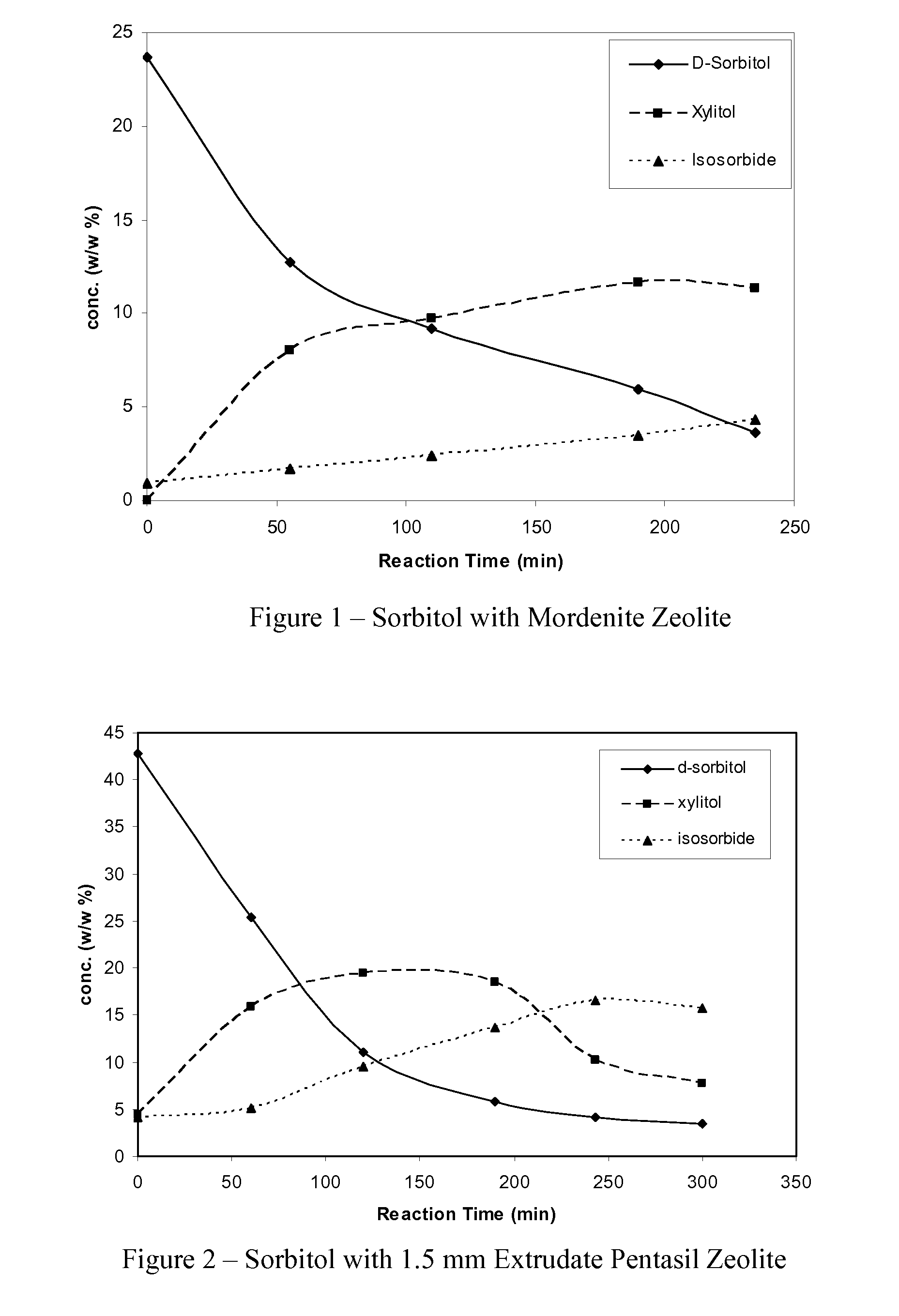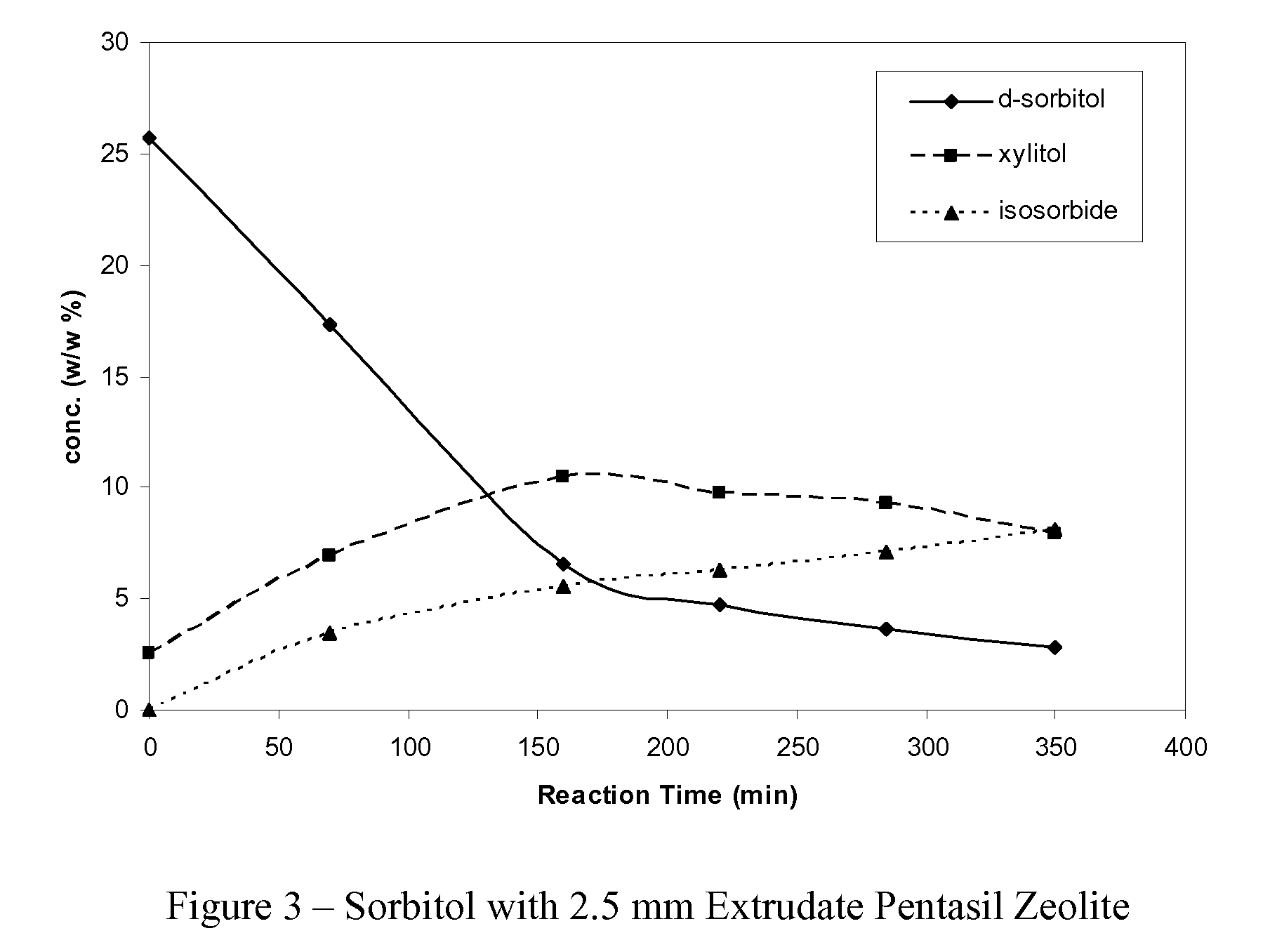Sorbitol conversion process
a technology of sorbitol and conversion process, applied in the field of sorbitol conversion process, can solve the problems of high cost and inefficiency of methods, methods that have not been demonstrated to be effective and are difficult to maintain on a commercial scal
- Summary
- Abstract
- Description
- Claims
- Application Information
AI Technical Summary
Benefits of technology
Problems solved by technology
Method used
Image
Examples
example 1
[0019]About 300 milliliters of an aqueous sorbitol solution, comprising about 25 wt % sorbitol, is added to a mix tank containing about 10 grams pentasil zeolite being in the form of 1.5 mm extrudates. The tank is sealed, the pressure is raised to between 68 bar and 80 bar with nitrogen, and the temperature is controlled to hold at about 250° C. Liquid samples are withdrawn at regular intervals of about 60 minutes for a period of up to 360 minutes, and analyzed by high pressure liquid chromatography (HPLC), after pre-treatment and dilution, to determine the relative concentration of sorbitol remaining and products produced. After about 250 minutes, approximately 92.5% of the sorbitol is converted and the product mixture comprises approximately 47.0% isosorbide and 28.6% xylitol.
example 2
[0020]The procedure of Example 1 is followed except a pentasil zeolite being in the form of 2.5 mm extrudates replaces the 1.5 mm extrudate pentasil zeolite. After about 235 minutes, approximately 84.5% of the sorbitol is converted and the product mixture comprises approximately 25.3% isosorbide and 64.7% xylitol.
example 3
[0021]The procedure of Example 1 is followed except a mordenite zeolite replaces the 1.5 mm extrudate pentasil zeolite. After about 350 minutes, approximately 84.8% of the sorbitol is converted and the product mixture comprises approximately 39.8% isosorbide and 38.2% xylitol. Gaseous carbon dioxide is also produced in the reaction.
[0022]It is understood that one skilled in the art may make alterations to the embodiments shown and described herein without departing from the scope of the invention. For example, it is anticipated that the concentration of sorbitol in the aqueous solution may be increased or decreased without affecting the resultant product mixture.
PUM
| Property | Measurement | Unit |
|---|---|---|
| temperature | aaaaa | aaaaa |
| pressure | aaaaa | aaaaa |
| reaction temperature | aaaaa | aaaaa |
Abstract
Description
Claims
Application Information
 Login to View More
Login to View More - R&D
- Intellectual Property
- Life Sciences
- Materials
- Tech Scout
- Unparalleled Data Quality
- Higher Quality Content
- 60% Fewer Hallucinations
Browse by: Latest US Patents, China's latest patents, Technical Efficacy Thesaurus, Application Domain, Technology Topic, Popular Technical Reports.
© 2025 PatSnap. All rights reserved.Legal|Privacy policy|Modern Slavery Act Transparency Statement|Sitemap|About US| Contact US: help@patsnap.com



